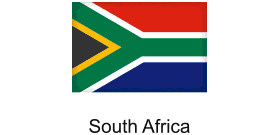 Some good news for South Africa’s cheetahs
Some good news for South Africa’s cheetahs
South Africa is home to around 1,300 of the world’s roughly 7,100 remaining cheetahs. It’s also the only country in the world with significant cheetah population growth, thanks largely to a nongovernmental conservation project that depends on careful and intensive human management of small, fenced-in cheetah populations. Because most of the reserves are privately funded and properly fenced, the animals benefit from higher levels of security than in the increasingly thinly funded state reserves.
Initiated by the Endangered Wildlife Trust nearly a decade ago, the Cheetah Metapopulation Project recognizes that small cheetah populations may be physically secure in several small reserves, but the likelihood of inbreeding remains high if they are kept separated behind fences. By swapping animals between participating reserves, the trust helps private and state wildlife custodians manage overpopulation and underpopulation on their land and also identify new areas of suitable cheetah habitat. Most importantly, swapping animals reduces the risk of inbreeding among closely related animals.
Vincent van der Merwe, coordinator of the trust’s metapopulation initiative, says that when the project began in 2011, there were 217 cheetahs scattered between 41 reserves. Now there are 419 spread across 60 reserves — more than a third of South Africa’s total cheetah population.
Cheetah populations elsewhere in Southern Africa have not prospered over the past 50 years. In Zimbabwe, cheetah numbers have crashed from 1,500 in 1975, to just 170 today. Botswana’s cheetah population has held steady at around 1,500 over the same period, but illegal capture for captive breeding and conflicts with farmers and the growing human population are increasing. In Namibia, there were an estimated 3,000 cheetah in in 1975; roughly 1,400 remain today.
